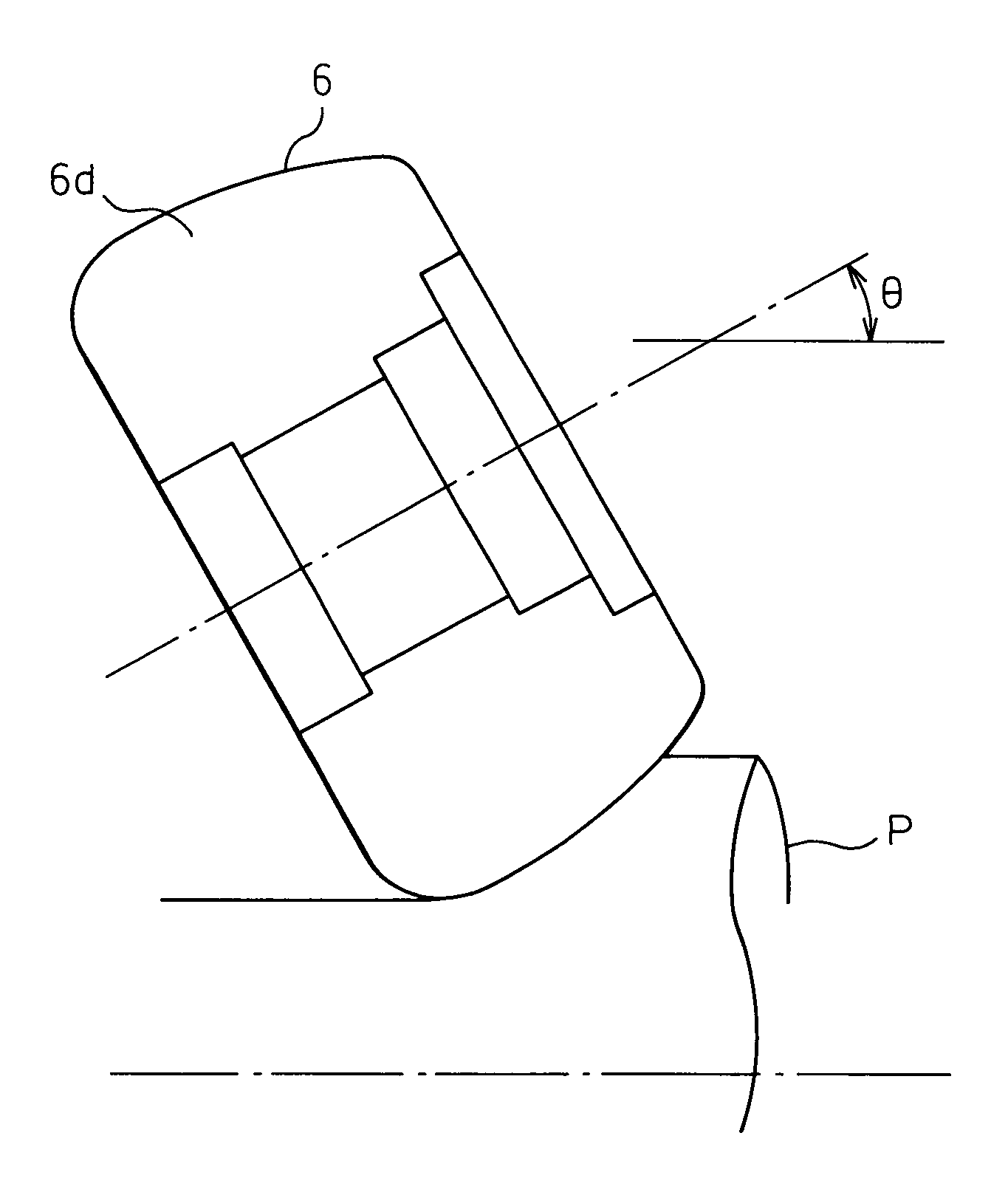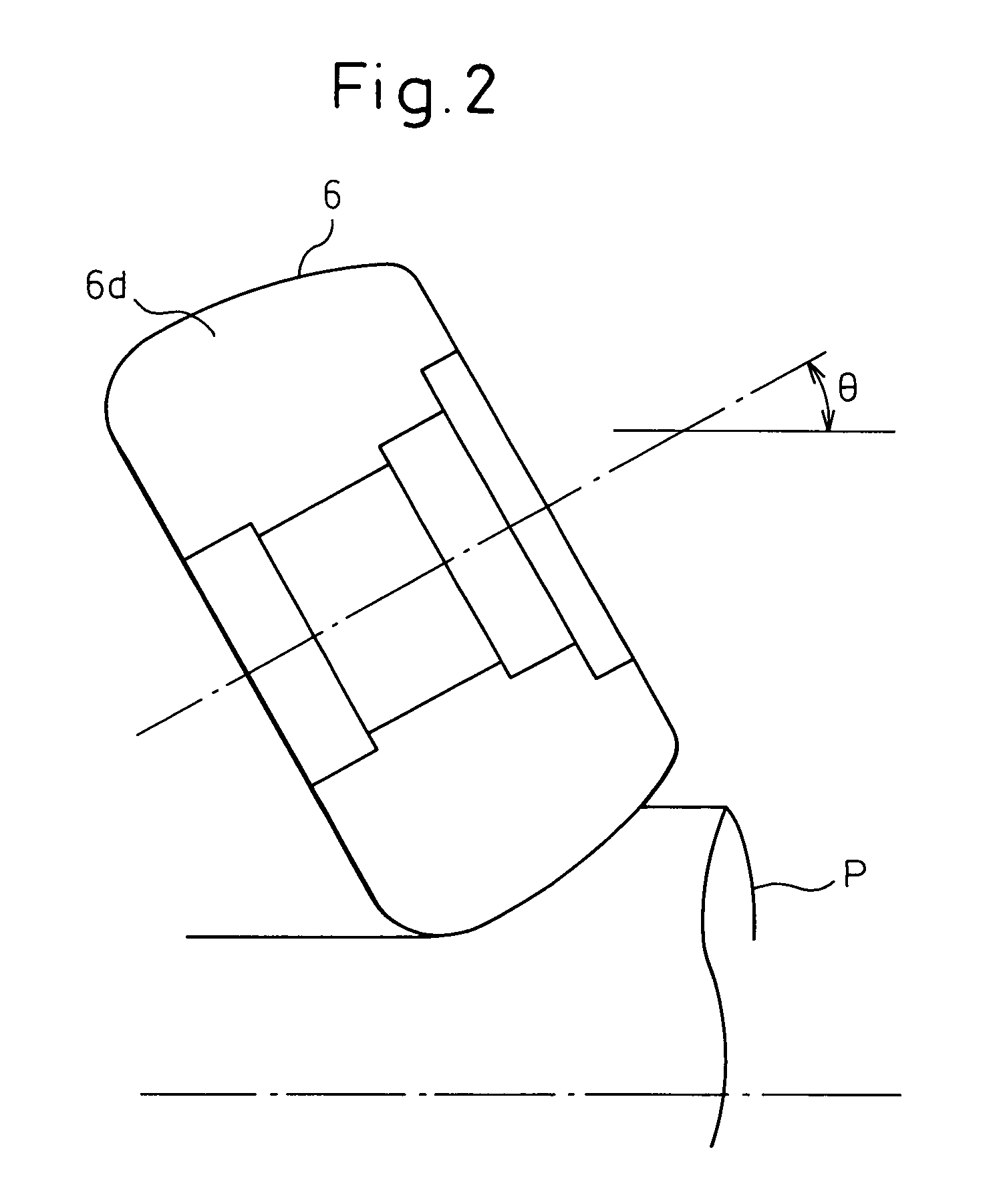Apparatus and method for production of tapered steel pipe
a tapered steel pipe and apparatus technology, applied in the direction of rolling mill control devices, manufacturing tools, shaping tools, etc., can solve the problems of high working defect rate, easy polygonal pipe cross-section, twisted, bent or otherwise defective, etc., and achieve high quality, high production speed, and uniform thickness
- Summary
- Abstract
- Description
- Claims
- Application Information
AI Technical Summary
Benefits of technology
Problems solved by technology
Method used
Image
Examples
example 1
[0074]The production apparatus shown in FIG. 7 was used to work electroresistance welded steel pipe with an outside diameter of 165.2 mm, a thickness of 4.5 mm, and a length of 9000 mm to a shape enabling two tapered steel pipes to be obtained as shown inFIG. 12. That is, two tapered steel pipes each with a taper length of 4500 mm, an outside diameter changing from 134.1 mm to 89.1 mm, and a thickness of 4.5 mm could be obtained. With the conventional method of not controlling the peripheral speed of the steel pipe and working roll, polygonal cross-sections or torsional deformation occurred with a high probability of a rate of occurrence of 50% or more. As opposed to this, by employing the method of production of the present invention of controlling the absolute value of the difference Δ between the worked part peripheral speed Vp of the steel pipe and the worked part peripheral speed Vr of the working roll, the defect rate was sharply reduced to 0.8% under conditions of |Δ|<0.045 V...
example 2
[0077]The apparatus shown in FIG. 11 was used to taper steel pipe with an outside diameter of 300 mm at a taper rate of 3 / 100 until 280 mm. It was learned that the optimum working temperature of the steel pipe was 700° C. As the initial value of the temperature drop constant during working (theoretical calculated value), 180° C. was selected. The output of the heating apparatus 4 was adjusted so that the steel pipe temperature of the exit side of the heating apparatus became 880° C. In the latter part of the working, the actually measured value of the amount of temperature drop became 190° C., so the temperature drop constant was made 190° C. and the temperature of the steel pipe at the exit side of the heating apparatus was raised to 890° C. As a result, it was possible to control the temperature of the steel pipe fed to the working roll to a range of 700° C.±20° C. and perform the tapering.
PUM
| Property | Measurement | Unit |
|---|---|---|
| temperature | aaaaa | aaaaa |
| length | aaaaa | aaaaa |
| diameter | aaaaa | aaaaa |
Abstract
Description
Claims
Application Information
 Login to View More
Login to View More - R&D
- Intellectual Property
- Life Sciences
- Materials
- Tech Scout
- Unparalleled Data Quality
- Higher Quality Content
- 60% Fewer Hallucinations
Browse by: Latest US Patents, China's latest patents, Technical Efficacy Thesaurus, Application Domain, Technology Topic, Popular Technical Reports.
© 2025 PatSnap. All rights reserved.Legal|Privacy policy|Modern Slavery Act Transparency Statement|Sitemap|About US| Contact US: help@patsnap.com



